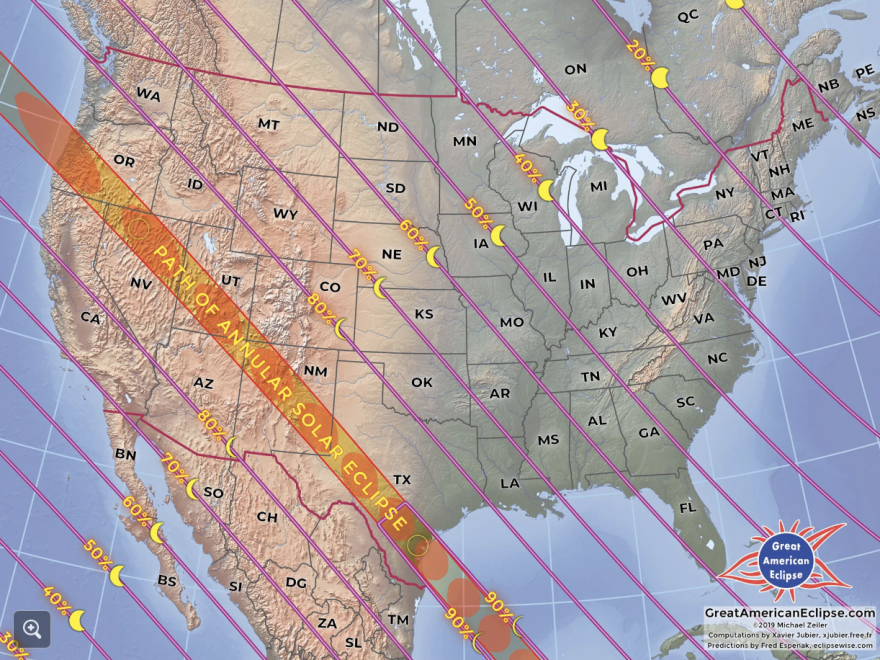The annular solar eclipse will cross North, Central and South America on Oct. 14, 2023. In the United States, the eclipse will start in Oregon around 10:13 a.m. MT and will end in Texas at 11:03 p.m. MT.
The path of annularity will pass just south of Idaho and will mostly go through northern Nevada, according to Dr. Irwin Horowitz, past president of the Boise Astronomical Society. Updated maps show Boise will see about an 85% obscuration during the eclipse.
“Here in the southwest Idaho region around Boise, we will see a partial solar eclipse but it will be mostly covered at its maximum,” said Horowitz in an interview with Morning Edition host George Prentice. “I'm actually looking forward to this because at that maximum point, which will be roughly 10:30 or so in the morning, the sun will look like it has a pair of horns. Or like a horseshoe.”

An annular solar eclipse is when the moon passes between the sun and the Earth while it is at its farthest point from the Earth. Because the moon is farther away, it appears to be smaller than the sun and does not completely cover it.
When watching an annular eclipse, it's important to remember to wear proper eye protection at all times because the sun is never fully covered.
For NASA, this eclipse will provide an opportunity to study the sun. Scientists will be using the eclipse to test and prepare scientific equipment for the total solar eclipse happening in April 2024.
NASA says it will also launch sounding rockets to study changes in the atmosphere.
If you don’t want to travel to get into the path of annularity to see the full eclipse, NASA will livestream the event on its YouTube channel.



